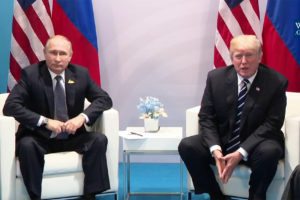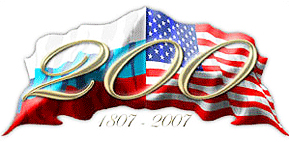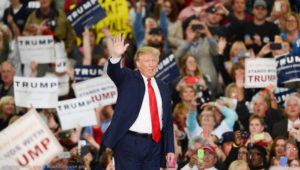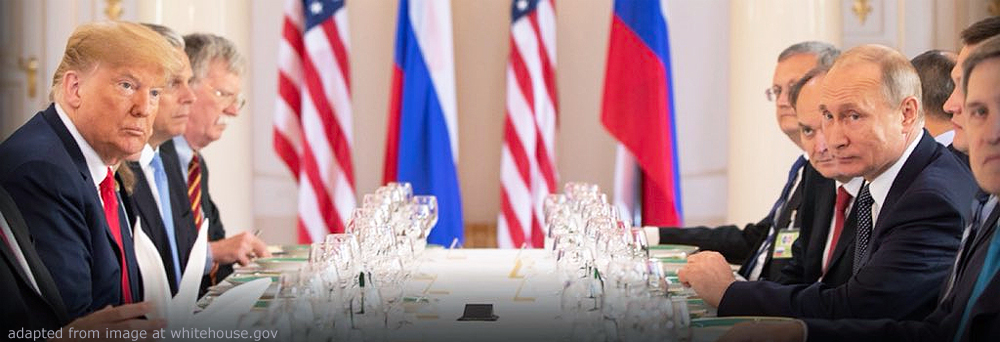Toward the Possibility of a New U.S.-Russian “Reset”: Does Their Hot & Cold Past Foretell Their Future?

(PONARS Eurasia Policy Memo – Ivan Kurilla – May 28, 2019 – Ivan Kurilla is Professor at the European University at St. Petersburg)
Relations between Russia and the United States have been known to change, for the better or for the worse, within a relatively short period of time. Drawing on historical examples, I analyze cases when relations improved and speculate about the applicability of past times on today’s political environment. This policy memo is the sequel to my April 2018 policy memo, “The Anti-Russia Surge in U.S. Politics: Finding Context.” The focus in this paper is on the former “resets” in U.S.-Russian relations and the placement of the current Washington-Moscow predicament into those models to gauge the status and potential of the bilateral relationship.
Based on the first two years of the Donald Trump presidency, which has been cloaked in Russia-related suspicions, the main conclusion is that increased cooperation is unlikely in the current phase of relations. However, very recent meetings between U.S. Secretary of State Michael Pompeo, Russian Foreign Minister Sergei Lavrov, and President Vladimir Putin, indicate both sides are searching for common ground. The problem is that Moscow and Washington need to find “problems to solve” that do not involve making large concessions-such as those involving sanctioned entities or the Donbas (for Russia) or Venezuela (for the United States). There are productive bargaining areas such as those pertaining to arms control and threats in Eurasia. However, after two years of heated exchanges, quality cooperation would be highly difficult to attain. Even if an agreement can be reached on a particular question, spreading this détente to other issues would hardly be feasible.
A Classification of Past Détentes
If we look at the past century of Russian-U.S. relations, periods of relatively good mutual attitudes can be easily found:
1933 when President Franklin Delano Roosevelt recognized the Soviet government;
1941-1945 when the two countries fought as allies against Nazi Germany and Japanese militarism;
late 1950s when Nikita Khrushchev visited the United States to meet Dwight Eisenhower;
early 1970s with the détente led by Richard Nixon and Leonid Brezhnev;
late 1980s with the Gorbachev, Reagan, and Bush summits;
early 1990s when Bill Clinton courted Boris Yeltsin;
after 9/11 when Putin was the first to call George W. Bush to offer his support and Russia became the first ally in Bush’s “War on Terror”; and
the “Reset” of 2009-2011 between former presidents Dmitry Medvedev and Barack Obama.
Between the time periods, relations were mostly tense and characterized by a lack of trust.
The list above is not just to show the mechanistic, cyclic movements of “resets” every 10-15 years, but as a departure point for thinking why those periods took place at all. It is helpful to sort the times of good relations into several categories.
The first is “friendship in arms,” an alliance against a common enemy, as in 1941-45 and 2001. The mutual perceptions of Russians and Americans as “brothers-in-arms” in a time of existential threat dates back to the 19th century and has been actualized each time a new common enemy appears.
The second variant emerged with the collapse of the USSR and was unique. The deprivation and loss of Soviet identity moved the vast majority of Russians toward revering the enemies of yesterday, a move, however, that found insufficient response in the triumphalist United States. This asymmetry of perceptions made the political construction erected in that period fragile and short-lived.
The third variant is perhaps the most interesting. If we investigate the domestic situation of the two countries in 1933, the late 1950s, and the late 1980s, we find that in all of the cases, the two countries experienced similar historical challenges. The Soviet government realized the need for technological breakthroughs and based its hopes on American engineering virtuosity-a similar logic applies to Stalin’s industrialization campaign, Khrushchev’s economic reforms, and Gorbachev’s uskoreniye (“acceleration”). U.S. society faced the need to restore itself after a big crisis: the Great Depression of 1929-30, the McCarthy era of the 1950s, and the big crises of the 1970s (Vietnam, Watergate). Each of these created an incentive for U.S. politicians to fix U.S. identity. Roosevelt, Eisenhower, and Reagan all tried to “make America great again” and they needed to alter relations with the USSR-its major rival and constitutive Other-in order to make their goals achievable.
A Touch of Theory
The place and the role of a constitutive Other in a national identity is to serve as the embodiment of everything opposite to the ideals ascribed to the political body of “us,” thus underlining those traits that “we” consider the most important. A political struggle within a nation tends to produce either different constitutive Others-as it was during the first U.S. party system when the Federalists considered England as the political model and an ally while France was seen as a threat, a scheme that the Jeffersonian Republicans reversed-or ascribe different features to the same Other.
Russian reformers habitually describe the United States as the model of their reforms (notwithstanding the essence of the reform), while Russian conservatives attribute everything they dislike in Russian life to corruptive American (or just “Western”) influences. Within Russian political discourse, reformers and conservatives have basically developed two possible uses of America, one positive, one negative. From such a vantage point, the history of U.S.-Russian relations can be seen as the history of domestic fighting over identity. For example, a political force in the United States aimed at promoting one or another set of values is often embodied in Russia as the opposite (the forwarding of an “un-American” identity).
Certainly, these perceptions have some roots in the policies of the other country; they are not pure propaganda. Both Russia and the United States produce a number of political acts and project numerous images through the media, but it is their domestic audiences that make the choice between the two possible focal points.
From this point of view, in order for diplomacy to be successful, it needs to respond to two challenges: 1) from the international situation and the country he or she is working on, and 2) from domestic public opinion in their own country that builds its own perceptions and uses the Other country in domestic political battles. Any recommendation that would respond just to one side of the equation is doomed to fail.
Putin’s Russia Looks at the United States
Putin’s nationalistic program cannot ignore the existence of the United States as the constitutive Other in Russian political language. For many years, the president successfully divorced domestic propaganda and U.S.-Russian diplomatic relations, although he kept them dynamic and sometimes cordial (especially in 2001-02) while using the United States for domestic audiences, which gradually resulted in most Russian grievances from former decades becoming linked to “egoistic” Americans. Russians appeared as “noble” victims of U.S. hypocrisy and cheating, especially in terms of NATO expansion and the “manipulation” of Russia’s close neighbors. It was in the 2007 Munich speech when Putin, for the first time, projected his domestic anti-American discourse onto international audiences. This was a turning point when Russia was claiming a new role after re-emerging from deep crises. However, from the domestic point of view, the Munich speech, which was made exactly one year before the end of the last constitutionally permitted term for Putin as president, represented the start of a presidential campaign under a new banner. Notwithstanding who was selected as Putin’s placeholder, the new legitimation of the regime would be that of keeping the nation secure against U.S. threats. Like almost any contemporary Russian politician, Putin needed the United States as an imagined evil in order to describe Russia, and his campaign, as a force for good.
President Dmitry Medvedev tried to get Russian-U.S. relations back on the model track of technology transfers and peaceful coexistence, but mass protests during Putin’s return to power in 2011-12 predetermined the sliding of the regime into more open rhetorical confrontation with Washington. All the bad elements in Russia, including the political opposition, were said to have been exported from the United States. The rather strange choice of a new quasi-ideology after 2012, that of “traditional values,” can be seen as a logical construction of something most un-American: if the United States promotes liberal values, then Russia should promote conservative traditions.
The Ukrainian crisis and annexation of Crimea certainly produced an extremely negative impact on U.S.-Russian relations. This topic cannot be properly analyzed in the space provided, but, as is well known, Russian propaganda demonized the new Ukrainian authorities as pawns of the White House. Washington’s reactions to the Ukrainian revolution, however, were very cautious compared to the outcry against Russia that began in 2016 in the United States and that continues to this day among large segments of U.S. political life. For its part, Moscow had immediately included Ukraine into its Russian-U.S. “chess game” and it had applied to Ukraine the same approach that it had taken in earlier times toward the domestic Russian opposition: linking it to Washington’s policies while simultaneously ascribing the most cunning intentions to America. Among the chief concerns of Washington was whether the Ukraine-Russia conflict was another issue requiring the demonizing of Russia.
Enter Trump
 The election of Donald Trump triggered an identity crisis in the United States. The liberal part of America could not recognize itself in the new commander-in-chief. The United States suddenly stopped being liberal in the eyes of Europeans and beyond.
The election of Donald Trump triggered an identity crisis in the United States. The liberal part of America could not recognize itself in the new commander-in-chief. The United States suddenly stopped being liberal in the eyes of Europeans and beyond.
If we look at the Trump agenda toward Russia (sidestepping all the conspiracy theories), we see that his approach in 2017-18 was consistent with the policies of former U.S. President Ronald Reagan in the 1980s. Reagan authored the slogan “Let’s Make America Great Again” and forwarded the breakthrough in U.S.-Soviet relations into his broader plan to influence U.S. identity. Reagan understood the importance of fixing the place of the constitutive Other in national politics. Mikhail Gorbachev helped Reagan make that breakthrough, and the “evil empire” for each suddenly became an ally of the “side of light.” Such a change helped Reagan reach his goal of healing the U.S. wounds of the 1970s.
Trump probably desired to repeat the trick and turn Russia from enemy into friend, thereby influencing the domestic identity discourse. He became fully immersed in identity battles immediately after his election, and in so doing, could not ignore the constitutive Other. However, in that battle for defining the Other, Trump is perpetually on the defensive. The main discourse on Russia is produced by the mass media critical of the president, and he may only hope that some strong political act from his side could overcome the media momentum.
Inside the United States, many politicians and liberal journalists found it easy to describe Trump as a Russia-backed-if not a Russia-blackmailed-president. The grounds for the accusations, however, were not very substantial despite media messages over the past two years that held it front and center. Russian hackers could break into DNC servers, and Russian trolls could tease Americans on social networks, but Americans who voted were the ones who elected Donald Trump. In line with the arguments above, the political rationale of “Russiagate” may be easily deciphered: the same way everything evil comes to Russia from America, everything bad comes to the United States from Russia. Keeping Trump sitting on the Russian investigation frying-pan proved to be a good tool for the U.S. political opposition. Details and ongoing findings aside, the whole story has significantly spoiled U.S.-Russian relations, leading to increased sanctions against Russia, the closure of consulates, and the expelling of diplomats.
What Can Be Done, What Can Vary?
Let us now compare the current situation to the previous instances of “resets” or détentes. The United States is not emerging from a crisis but is still in the middle of a deep identity crisis. Trump is wrong if he thinks he is healing the United States after some kind of crisis. His lifted slogan “Make America Great Again” implies this vision, but on some levels, he is the embodiment of “crisis.” The good opportunity for improved Russian-U.S. relations will arise when current crises are over and the nation regroups. It cannot be excluded that Trump will triumph some day over his critics in regards to Russia, but his inability to do so over the first two years of his presidency puts this ability in doubt. However, the crisis reassured us that any deep discussion about U.S. identity involves Russia as a threat or model. In describing Russia’s “un-American” features and actions, U.S. politicians “describe” America. An identity crisis requires redefinition of the Other in order to redefine oneself. That is why, for any next U.S. president, which could be Trump, changing Russia’s image will be a task that helps it emerge from its domestic predicament.
One of the main aspects here is that Russia is on the eve of realizing it needs technological rearmament. Certainly, the legacy of Putin’s decisionmaking makes it very doubtful that he will be able to get the United States to lift sanctions on Russia or improve the image of the United States (through the propaganda that the regime controls). It goes without saying in Russia that the government has the largest influence on public perceptions. Russian propaganda had reached its domestic goals of mobilization against a demonic America in the period before the Russian presidential elections last year. By early 2019, the Kremlin no longer needed the United States as a foe. That is why we saw an impressive increase of positive attitudes toward the United States in Russia in the leadup to the Helsinki Summit in July 2018.
The current crisis in U.S.-Russian relations will most probably continue for several years, but if history provides any lessons, it is that bilateral relations will have an upswing. Considering that the Russian domestic situation will remain unchanged until the next presidential election in 2024, the next U.S. election might provide an opportunity for at least a new détente. Between now and then, the very recent meetings between Pompeo, Lavrov, and Putin, which contained discussions about the possibility of a new presidential summit, and the closure of Special Counsel Robert Mueller’s investigation, suggest that Trump is set free to pursue a new détente.
Full article appeared, with different images, at ponarseurasia.org/memo/toward-possibility-new-us-russian-reset-does-their-hot-cold-past-foretell-their-future bearing the following notice:
PONARS Eurasia © 2019 All rights reserved
with the text “Permissions & Citation Guidelines” linking to ponarseurasia.org/permissions-citation-guidelines, which, in turns, bears the notice:
Permission:
Content by PONARS Eurasia may be re-distributed for Fair Use (non-commercial) purposes with credit provided to PONARS Eurasia and the author(s) and with a hyperlink/URL pointing to the original content page on this website.

